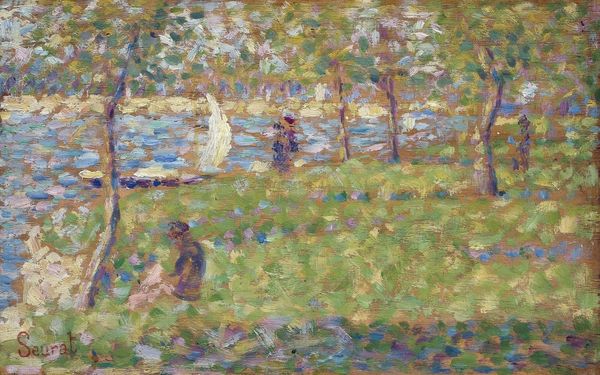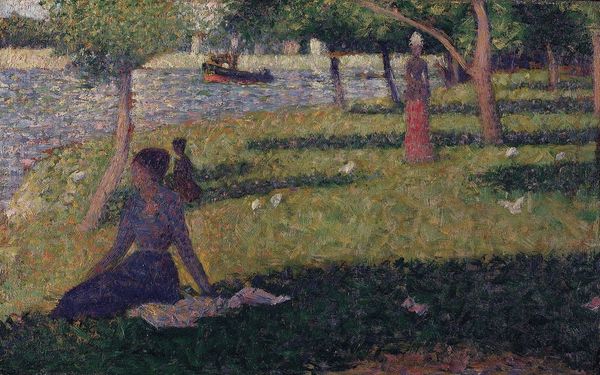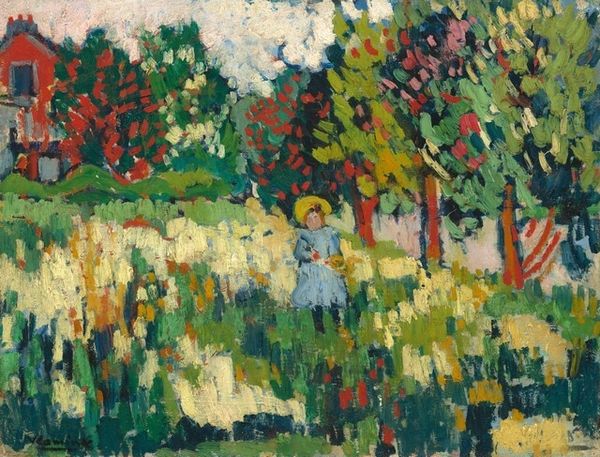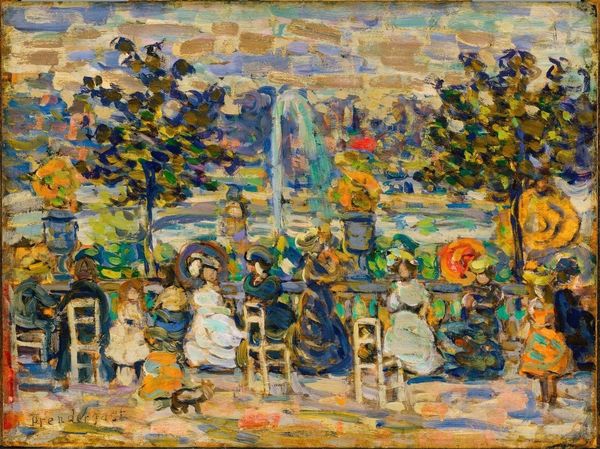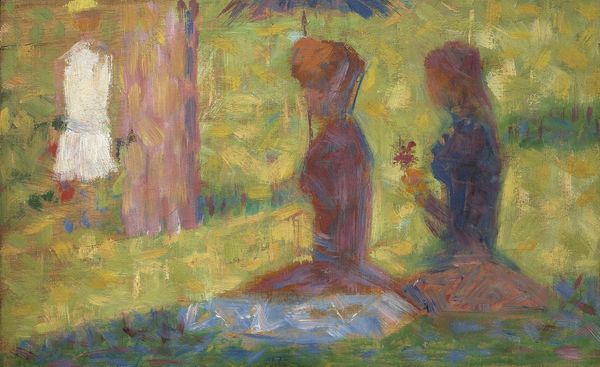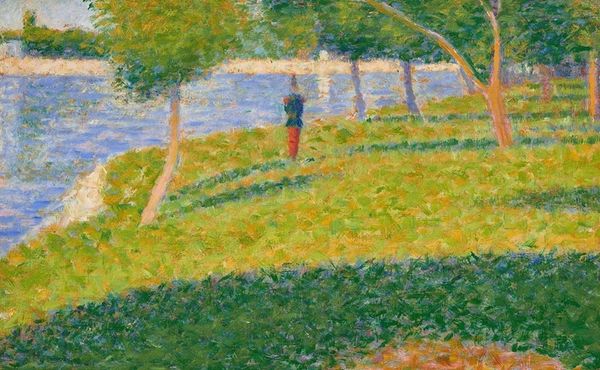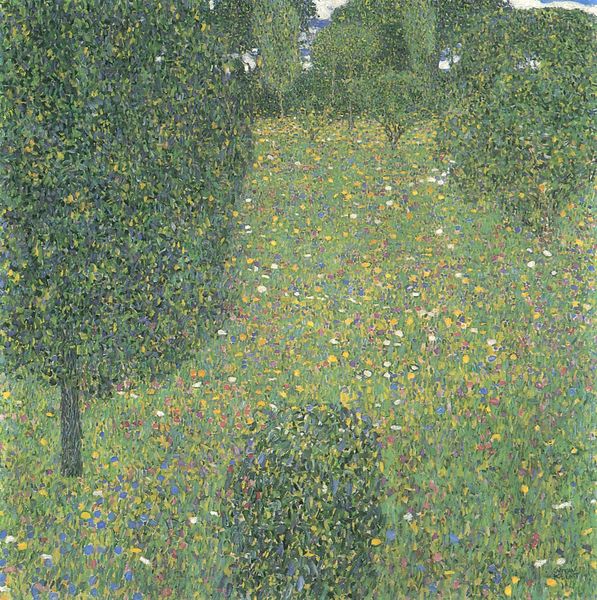
painting, oil-paint
#
impressionist
#
garden
#
painting
#
oil-paint
#
landscape
#
figuration
#
post-impressionism
Copyright: Public domain
Editor: Here we have Georges Seurat’s "The Couple," created around 1884. It’s an oil painting that seems to depict figures in a garden or park. What strikes me most is how the figures almost dissolve into the landscape; they seem like fleeting apparitions. What do you see in this piece? Curator: I see echoes, palimpsests of pictorial language. The impressionistic technique—broken color, light fractured into dabs—becomes a symbolic code for impermanence and the elusive nature of modern life. These figures, are they walking, pausing, or are they fragments of memory being composed into a dream-like tableau? Note the recurrence of the parasol, like the woman's figure; they reappear throughout art history from antiquity through the modern era, serving as both a protective symbol and an emblem of leisure, a statement about cultural status, but also suggesting themes of both sheltering and concealing. Editor: So, the style itself carries a symbolic weight? The dabs of color, rather than just representing light, represent something more? Curator: Precisely. It’s a method mimicking perception, isn’t it? We don’t see the world as solid forms but as shifting sensations. And Seurat is very concerned with sensations and optical experiences; we feel a nostalgic atmosphere. That’s precisely what it means to represent modernity and modern leisure! Editor: It’s almost like the figures aren’t fully there, perhaps highlighting alienation despite being amidst leisure activities. Curator: Exactly! The separation of individuals within a social space is also visually communicated and embodied. Do you think these figures are together? Do you see a connection, even, represented on the canvas? The composition doesn't allow for us to establish direct connection, yet, together in the painting and their presence transforms its reading to *The Couple*. Editor: I guess I hadn't considered the figures’ detachment so overtly before, but thinking about the parasol and considering that visual cue has provided interesting nuance in its viewing. Curator: Indeed, thinking of such historical recurrence allows for the creation of the "modern" on something built to last. A true legacy.
Comments
No comments
Be the first to comment and join the conversation on the ultimate creative platform.
